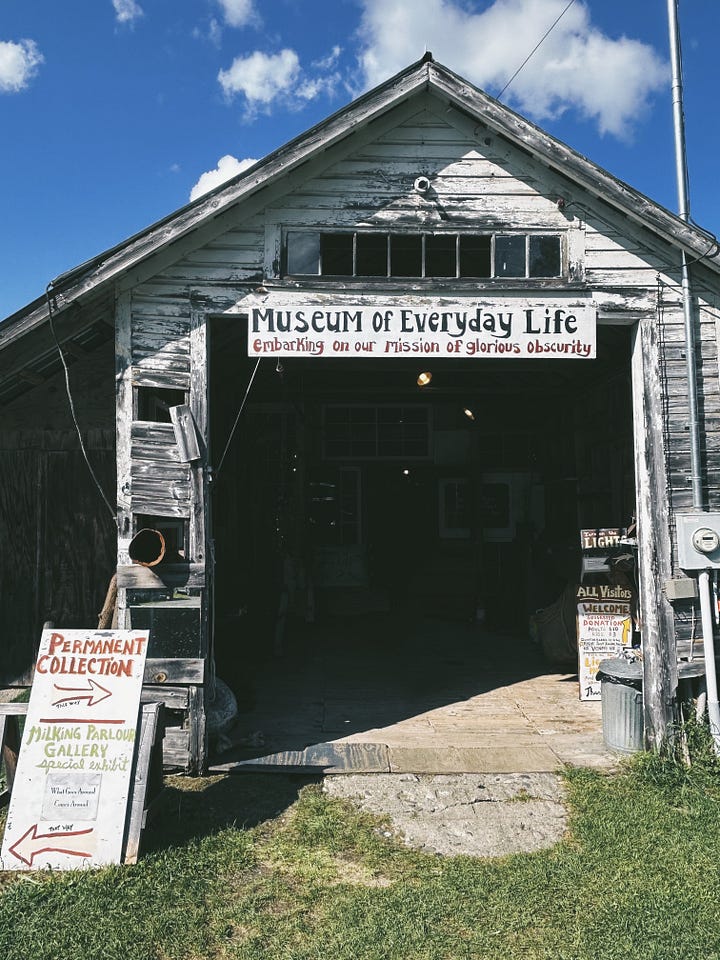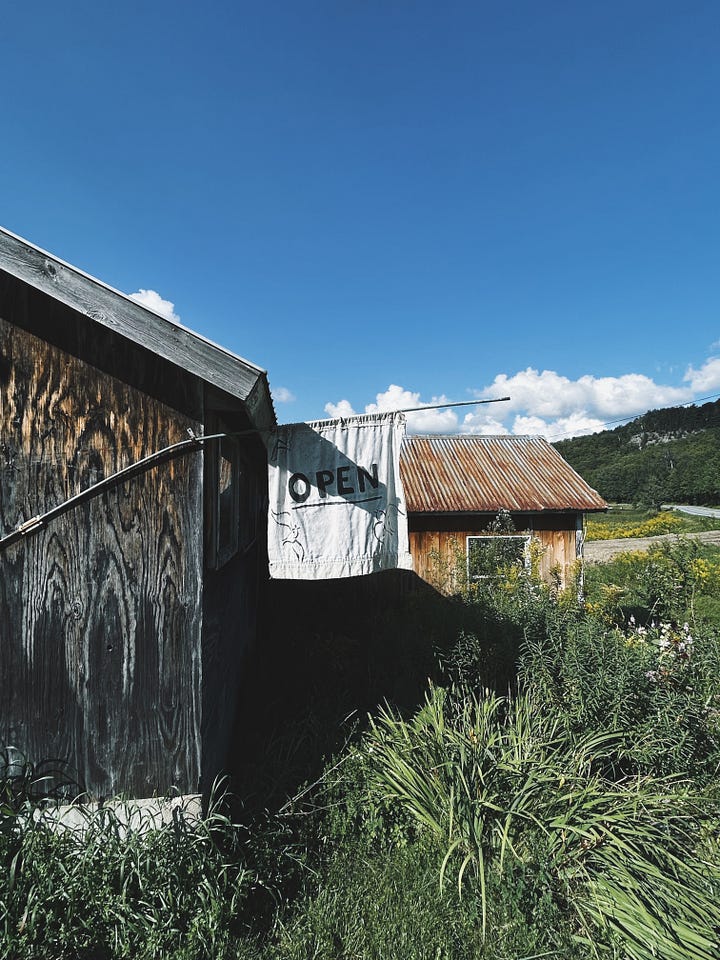



I write this to you through a fog of jet lag—yesterday I flew into a golden London dawn, returning from a trip to visit my brother who lives in Vermont. I had woken amongst green mountains, in an old, creaky house with a jetty, on the edge of a pond (or what I would call a small lake), but I found myself stumbling sleepless into a second morning. After a frighteningly too hot, wildfire-threatened summer, I was grateful for the cool scent of familiar urban rain.
Should you ever find yourself in the Northeast Kingdom of rural Vermont, I urge you to seek out Dry Pond Road where, just outside the small village of Glover, you will come to the dilapidated white barn that houses the Museum of Everyday Life. My brother, knowing I would love it, took me to see this collection of cleverly curated simple treasures, which is like no museum that I have ever encountered. It is, in the words of creator Claire Dolan: ‘a heroic, slow-motion cataloguing of the quotidian’, intended to ‘celebrate mundanity, and the mysterious delight embedded in the banal but beloved objects we touch everyday’.
You will need to switch on the lights as you arrive at the tumbledown, cavernous barn. In the entrance hall hangs a floor-to-ceiling net covered with hundreds of small bells. The netting is attached to the arm of a record player, and as the record endlessly spins, the bells make a continuous, fairy-like tinkle. Inside the museum are displays of common objects that include pencils, toothbrushes, safety pins, locks and keys, scissors and—truly—dust. They all contain what Claire Dolan recognises as “storytelling power”, and it is a compelling force. There are no dinosaur bones held here, no famous paintings, no archaeological discoveries. These items are familiar and unremarkable, but the act of cataloguing and displaying them has dignified everyday things and elevated them—seen afresh, they become sources of wonder.
I adored everything about this unique museum, but its display of lists and notes is now most tightly entangled in my imagination. The explanatory text mounted on the wall at the start of the display describes lists and notes as types of portraits:
‘These material artefacts contain traces of the person who created them—the list’s or note’s script reflecting the steadiness of the author's hand, creases on the surface recalling the crumpled space of a person’s pocket, a smudged fingerprint […] The list or note contains the outline of a character, a story, and our minds rush to fill in the blanks.’
There were shopping lists, to-do lists, a swathe of lists (to which we added) generated at a List Writing Station with a jar of prompts; there were love notes, admonishing notes and instructional notes… but I was most drawn to the unfinished examples. A note, embroidered in neat black cross stitch, that entreats ‘come, dear’, the remaining black thread trailing down like an incomplete thought, and an handwritten list (found by a Vermont couple after their tenant moved out of an upstairs apartment) which poignantly reads:
Things that have never happened
Never been asked to dance
In the museum’s strange space, its air thick with stories, questions floating up to the ceiling and out through the open door, I thought about the ways in which we unwittingly transfer something of ourselves to the simplest items—the spoons we use to stir tea, the buttons on our clothes, the pencils we pick up to write lists, the lists that we have written. I stood, far from home in an unfamiliar place, and I was reminded of the value of the familiar. I once read that if you are a writer, everything you write or have written could be distilled down to a single idea. Mine, I think, would be this:
there’s magic in the everyday.





Oh that’s such a fascinating practice, Mel!
Love this. I agree that we transfer something of ourselves to the things around us. And I love the distillation of your writing to there's magic in the everyday. I feel this too.